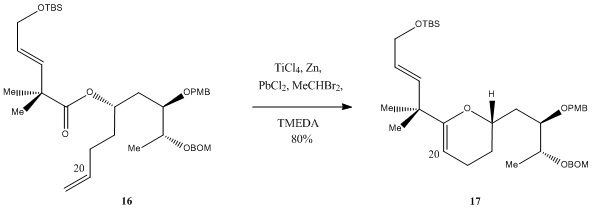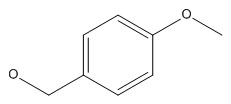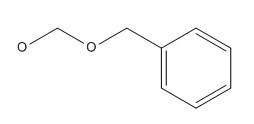
Glycal Molecule 17 via Molecule 16
 |
 |
 |
 |
 |
 |
 |
A LIFE Story
Keck, G. E.; Poudel, Y. B.; Cummins, T. J.; Rudra, A.; Covel, J. A. J. Am. Chem. Soc. 2011, 133, 744-747.
The glycal molecule 17 is formed from molecule 16 through a series of reactions. First, the reagents (PbCl2 and TMEDA and TiCl4) undergo a Grignard reaction. Then, their product reacts with molecule 16 to form an olefin, which then undergoes an olefin metathesis reaction to form molecule 17. Molecules 16 and 17 are part of the first total synthesis of bryostatin 1, a compound that displays promising biological activity against many human disease states such as cancer, diabetes, stroke, and Alzheimer's disease. Brystatin 1 is a natural product that has to be isolated from the marine organism Bugula neritina so its synthesis could be useful to scientists and medical professionals.

Glossary
| Abbreviation | Structure |
|---|---|
| OTBS |  |
| OPMB |  |
| OBOM |  |
Promo video for LIFE- Hasbro from Brightlighter Productions on Vimeo.